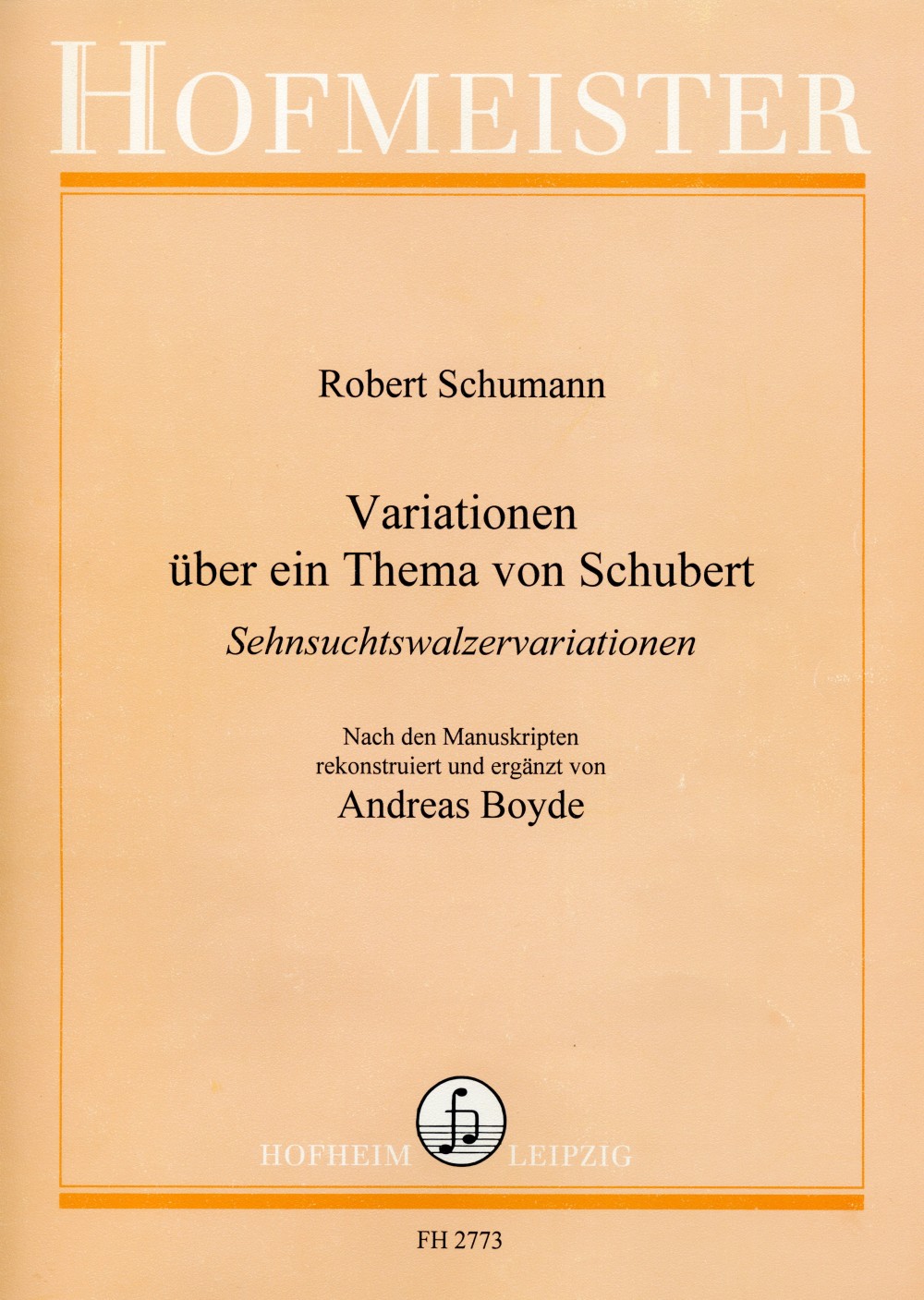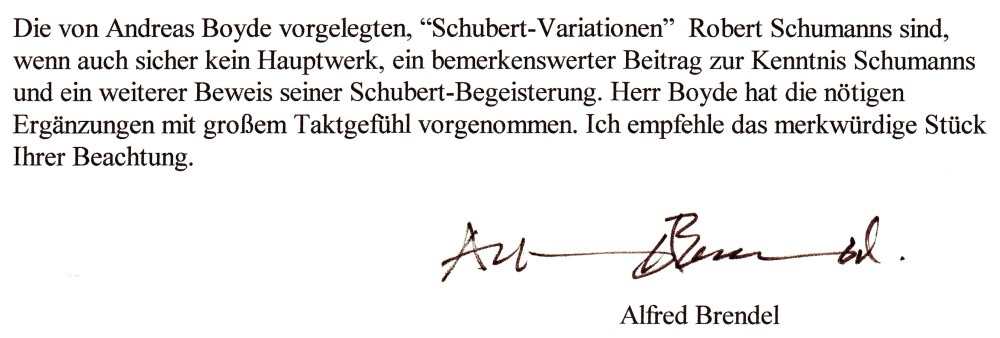Robert Schumann
Variations on a Theme by Schubert
Sehnsuchtswalzervariationen
Reconstructed from the manuscripts by Andreas Boyde
In 1827 Schumann began “revelling” in the music of Franz Schubert. He heard his songs for the first time, was introduced by Agnes Carus to the four-hand works for piano and fell in love both with “Schubert’s Waltzes and her”. His diary on 2nd March 1829 mentions a “fruitful improvisation on the Waltz of Longing”; eight months later he requested the music for the complete Schubert Waltzes from Friedrich Wieck and according to Friedrich Täglichsbeck played them “beautifully and whenever he had the chance”. In November 1833 he began work on a first draft for the ‘Variations on the Waltz of Longing’ and in 1834 made two more attempts to finish the piece. The resulting fragment was dedicated to Henriette Voigt, a close friend and skilled pianist whose house Schumann frequented from early 1834 and whose enthusiasm for Schubert he shared.
The catalyst for the composition of the ‘Schubert’ Variations was possibly provided by his highly regarded friend Ludwig Schuncke, who had recently composed variations on the same theme. His work met with Schumann’s disapproval however for he felt it “inappropriate … to set such heroic variations on such a heartfelt theme as Franz Schubert’s Waltz of Longing.” The virtuosic piece for piano and orchestra missed the poetic grasp of its inspiration since “in the deafening noise of the world … the flower of lyricism cannot blossom beautifully and freely – rather it quietly buds and floats its perfume in secret.” His own variations are therefore lyrical and intimate and reveal “particular soul states”. As he wrote to Henriette Voigt: “It is said that precious stones generate sparks of inspiration and many musical names have come together to form what I would like to call ‘Scenen’. They are actually lilies of love, held together by the Waltz of Longing. The dedication is only deserved and valued by a soul in A flat, one which is like yours, like yours alone my treasured friend.” To Schumann the theme was one of the “waltzes of the heart” which were the keys of “D flat and A flat waxing lyrically … evening flowers and figures in the dusk, the remembrance of lost youth and of a thousand loves” and which “remind us of something beyond our reach”. However in 1834, with the foundation of his Neue Zeitschrift für Musik in April and his engagement to Ernestine von Fricken, these retrospective feelings began to fade as Schumann looked to the future. One can hear a gradual change in the mood of his music as the dreaming ‘Eusebius’ is increasingly ousted by the stormy ‘Florestan’, and consequently Schumann no longer described “lilies of love”, but saw in their place a “masked ball”. Furthermore, in September 1834 he discovered the similarity between the musical letters of his fiancé’s home town (ASCH) and those of his own name (SCHumAnn) and used these motives as the new basis of the work. The result was that as the circumstances in his life changed, the Carnaval, Op. 9 began to take shape, the “Scenen” now challenging the ‘Philistines’ and passionately overriding each other. Crucially, Schumann used only the first twenty-four bars of the ‘Variations on the Waltz of Longing’ to open what is a very different musical work, the remaining material of the ‘Schubert’ Variations being left unfinished.
The ‘Schubert’ Variations begin with a Maestoso introduction of which the opening motif is extracted from the following 1st Variation, which had actually been written first. The waltz theme is quoted in the middle section before the last ten bars of the Maestoso return to and expand the start. The 1st Variation, in spite of its parlando marking, is strictly built on the harmonic structure of the waltz, whilst the 1st Ritornell explores the melodic fragments of Schubert’s dance. The theme is heard in the 2nd Variation, but veiled as if distantly remembered, before a more urging version is presented by the 2nd Ritornell. As it appears in the manuscript, this comprises only of a bass line beyond the opening few beats where there is some right-hand material, enabling a reconstruction to take place. The 3rd Variation is a Burla in which the last four incomplete bars have been supplemented with a lower voice. It displays the waltz in a more clearly recognizable shape than in the subsequent 3rd Ritornell, in which the last three bars have been reconstructed from fragmentary material. The 4th Variation reinstates the sense of Schubert’s dance and is complete in the autograph, whereas the 4th Ritornell has no direct references to the theme. Here, and in the agitated 5th Variation, several missing bars which follow the musical flow had to be inserted. To round off Schumann’s fragment it has been furnished with the addition of Schubert’s original ‘Waltz of Longing’.
Duration: approximately eight minutes

